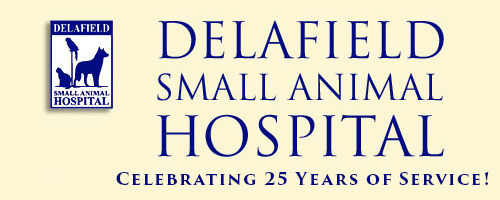Library
-
Since cats are living longer and longer, they are also experiencing the deterioration and debilitation that goes along with aging. This includes the development of osteoarthritis. No one is in a better position to identify the subtle changes in behavior that may signal pain than human family members. You may observe changes in the following: vocalization, daily activities, daily habits, facial expressions, or posture. Your cat may show uncharacteristic behavior to other pets or family members. If you notice any of these changes, contact your veterinarian.
-
Baths should be performed in a comfortably warm area, using lukewarm water. Medicated shampoo should be applied to a clean, wet coat, so start by thoroughly rinsing your cat with lukewarm water. Shampoo should be worked into the coat thoroughly and allowed to sit for 10 minutes before rinsing unless directed otherwise by your veterinarian.
-
Cats are very good at hiding signs of pain, so cat owners need to be very observant to recognize behavior changes that indicate their cat needs help. Some of the most common behavior changes are associated with grooming and litter box habits. This handout describes these and other changes to watch for, as well as advice on how to support your aging cat.
-
Hyperlipidemia refers to elevated levels of lipids (fats) in the bloodstream and can be due to several causes. Often times there are no clinical signs. Hyperlipidemia is confirmed using a 12-18 hours fasting sample. The pet's medical history and a search for an underlying cause is important for its treatment. If no underlying cause is found, your pet will need to start eating a low-fat, high-fiber diets, and may be started on the appropriate medications and supplements.
-
Hypokalemia is a term that refers to a low blood concentration of potassium. Potassium is an important electrolyte within the body and is vital for the normal function of muscles and nerves. Mild to moderate hypokalemia often does not cause clinical sigs, but severe hypokalemia can result in generalized muscle weakness, lack of appetite, and some cats may become constipated. The underlying cause of hypokalemia is often chronic kidney failure. Hypokalemia and its associated clinical signs may be quickly corrected by potassium supplementation. Depending on the cause, it may be necessary to continue supplementing potassium permanently.
-
Imidocarb dipropionate is an injectable medication that is administered by a veterinarian to treat babesiosis in dogs. It is also used off-label to treat other protozoal infections in dogs, cats, and horses. Most common side effects include mild drooling, tearing, vomiting, or nasal drip. Do not use in pets with exposure to cholinesterase-inhibiting drugs, pesticides, or chemicals. If a negative reaction occurs, please call your veterinary office.
-
Inappropriate elimination generally refers to urination and/or defecation in places other than the litter box. The behavior is sometimes referred to as ‘house soiling’. Inappropriate elimination may be due to a medical condition, a behavioral disorder, or both. Treatment is very specific to the underlying cause.
-
Infertility in a queen (an intact female cat) is defined as the inability to give birth to live kittens, despite appropriate breeding with a fertile male. This handout provides an outline of common causes of infertility along with how they are diagnosed and, when possible, treated.
-
Inflammatory bowel disease (IBD) is a syndrome affecting the stomach and/or intestines that can cause vomiting, diarrhea, or weight loss. It is considered a chronic condition that may have a good prognosis, though a diagnosis is not always easy. Treatment may involve a diet change, medications, or both and will need to be closely followed to prevent relapses.
-
A hernia occurs when a body part or internal organ protrudes through the wall of muscle or tissue meant to contain it. In the case of an inguinal hernia, these internal organs or structures have managed to make their way through the inguinal ring (an opening in the abdominal wall near the pelvis) to protrude into the groin area. The condition itself can be broadly classified as either acquired or congenital. In general, it is best to surgically repair an inguinal hernia at the time of diagnosis, as delaying can result in a more complicated and difficult procedure.
